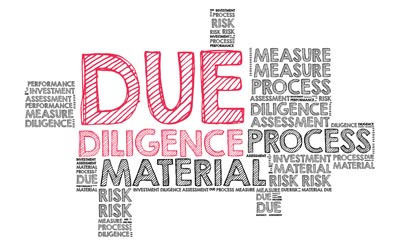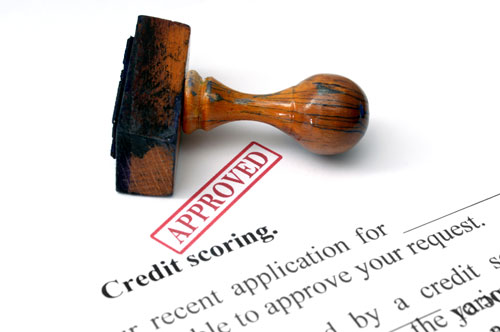- Value uplift
- When the value of an enterprise increases -- perhaps on the basis of some specific action or event. If the company gets a large, new and profitable customer the transaction will generate a "value uplift".
- See also
- Next

"Vendors due diligence" is the seller's DD before a planned sale of a company. It is a structured, detailed and penetrating review of the business. The intention is to find weaknesses and risks which may affect valuation and price so that there is time to deal with the problems. The weaknesses which cannot be remedied, or which remain, must be made visible and disclosed so that an offer of the company includes them.
The seller wants to avoid a situation in which the buyer,in its own DD, finds weaknesses which can be used to justify price reductions or changes in terms and conditions at the end of the selling process.
The design and extent of a VDD is specific to the situation and depends on the company's industry and size. A VDD is similar to a buyer's DD, but is usually somewhat more limited to those areas where the seller and the management suspect that there may be deficiencies. It may, for example, contain sections for:
The seller will usually engage external advisors so as to obtain an independent review of selected parts of the enterprise.
Image: Shutterstock

A vendor note is a type of debt instrument when a seller of an asset gives buyer a loan to finance the purchase (promissory note). A vendor note is used to enable or facilitate a deal.
As seller gives buyer a loan increases the seller's risk in the deal - a risk that is usually compensated with a higher sales price. The loan can be secured, for example, by making the asset that is being sold a collateral. It can also be called "seller note".
Image: Shutterstock

A classic "Venture Capital" investment is a time-limited, usually a minority, investment in an unlisted company. Often the enterprise is a young company which is in an early phase (early stage) of its life cycle.
The venture capitalist will be active in his or her ownership, will take a seat on the Board of Directors, and will work on the company's strategic development in between Board of Directors meetings.
The concept venture is said to be an abbreviation of adventure which means that a direct translation would be adventurous or adventuresome capital.
Image: Shutterstock

A company which finds itself in a vicious circle has ended up in a difficult situation. Perhaps it does not have the characteristics that are essential to enable it to compete in a market, or opportunities to develop. The owners, the Board of Directors and the management keep running, and at last end up running around in circles, not finding any quick solutions, and becoming more and more frustrated.
Image: Shutterstock

Volatility is a measure of risk which shows how much the price of a financial asset (e.g., a share) will vary. The measure is based on the standard deviation over one year's daily history. The more a share's price varies up and down the greater the volatility. The volatility is used as a measure of the share's market risk but provides no information as to whether a share is on the way up or the way down.
The word derives from volatile, which means fleeting or unstable.
Image: Shutterstock

VUCA is an abbreviation for Volatility, Uncertainty, Complexity and Ambiguity. It is used to describe a situation that is rapidly changing, which leads to volatility, uncertainty, complexity and ambiguity. It was originally a military term for a very uncertain situation. The general use of the term VUCA began in the 1990s.
It is used in the context of strategic planning to describe and explain a specific situation. The management in a company may try to avoid responsibility for mistakes by claiming that it is not possible to prepare and plan activities in a VUCA world. But this is misleading. Instead, you should ask the question: If we live in a VUCA world; how should we act to adapt and take advantage of the uncertainties?
However, VUCA takes into account that some decisions are very complex. It brings together four different types of challenges that require four different set of actions - one for each letter of the acronym.
An overarching issue is how much we know about each challenge and how much we can impact the outcome. But it keeps on your toes, and forces you to be well prepared, flexible, responsive and innovative.
Image: Shutterstock

"WACC" is an abbreviation of "Weighted Average Cost of Capital". The cost of the capital a company uses is divided into two principal types:
A business must strive for an optimal mix of equity and borrowed capital. But how the optimal balance will look will depend on the company's situation and will vary over time. A young company without a history will often find it hard to obtain bank loans and will therefore be financed mainly with the shareholders' equity, while a more mature company with strong cash flow can increase the share of loans.
The cost of bank loans is usually lower than that for equity capital. This depends in part on the lender often taking security in the company's assets and requiring payment of interest and amortization even in periods when the owners do not receive dividends. The shareholders' contributions to the equity capital are not secured by the assets and cannot be taken out whenever a shareholder wants. The company must have sufficient financial strength and unrestricted means (unrestricted equity capital and liquidity) in order to be able to pay dividends to the shareholders. In addition, the company's shareholders come last in the line of creditors in the event of a liquidation or bankruptcy. The shareholders therefore require a higher return (interest) on their capital than a bank does.
Assume that the cost of bank interest (after taxes) is 3% and that the shareholders require 10% (risk-free interest + risk compensation). Assume further that the company is financed 40% loans and 60% equity capital. The average cost of capital WACC is then (0.4x3%) + (0.6x10%) = 7.2%.
The return on all investments which the company makes must exceed the WACC in order for the company's profitability with its existing capital structure to be maintained. For that reason, the WACC is included as an interest rate (discount rate) in assessment of the company's investments, e.g., in calculations of NPV and DCF.
Image: Shutterstock
The concept covers legal undertakings which a buyer requires from a seller of an asset, for instance shares in a company. The buyer's intention is to minimize risk and compensate itself for negative surprises. The buyer requires that the seller guarantee certain important facts about the company and also assume liability for any deficiencies in the guaranties (breach of warranty).
The seller must then cover the loss (damage) which the buyer suffers on the basis of the facts about the company not turning out to be what the seller had guaranteed. But in order to obtain compensation, the buyer must be able to show that a deficiency led to a loss and that the deficiency is covered by the guaranties.
There is no strict definition of the difference between an option and a warrant, but you may say a warrant is a call option with the rights to subscribe for new shares (or other securities). A warrant's lifetime (before expiration date) is usually longer (years) than for options (months).

A friendly, desirable investor in, or buyer of, a company. In conjunction with a threat of a hostile takeover, some owners will look for a white knight which can come in with an attractive alternative for those shareholders who are prepared to sell to an undesirable, new owner. The white knight will then come as a saviour and the company will avoid a hostile takeover.
Even the Board of Directors and the management will prefer the white knight as a new owner since it most often will not intend to change direction, strategy, Board of Directors or management.
Image: Shutterstock

The worst imaginable scenario! In connection with the assessment of an investment, the investor develops a number of alternative possible outcomes (e.g., high, likely and low). As a last complement to these alternatives, a worst-case scenario is also imagined and analyzed. The same thing is true for a company management which is evaluating a significant transaction or business deal.
It is customary to say that one must not take greater risks that those with which one can live and sleep well with the worst-case scenario!
Image: Shutterstock